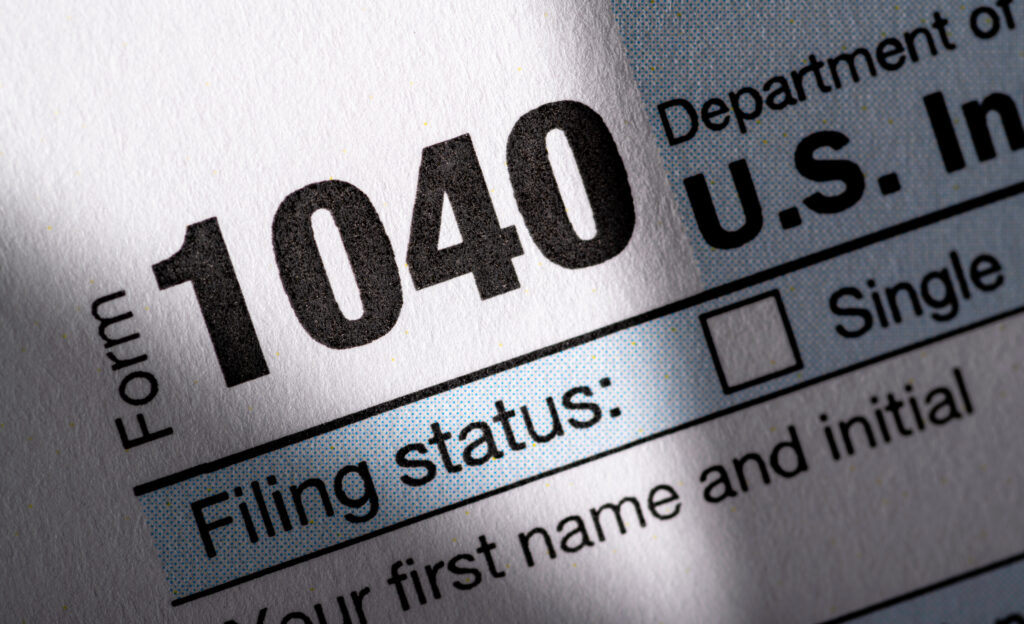The Inflation Reduction Act (IRA) signed by President Biden Aug. 16 includes a variety of tax provisions that will impact U.S. businesses and individuals. While some of the changes have received a great deal of media attention, others may come as a surprise to those who have not been following the legislative process closely. Generally, the changes implemented in the IRA fall into one of eight broad categories:
- Extending the health insurance premium tax credit provisions of the American Rescue Plan Act of 2021 through 2025
- Changing the tax credits for electricity produced from some renewable resources, the energy tax credit and certain fuels
- Extending state and local tax (SALT) limitations
- Adding research credit flexibility
- Extending excess business losses (EBLs)
- Increasing IRS appropriations by $80 billion to improve taxpayer services, increase enforcement and fund other activities
- Establishing a 15% corporate alternative minimum tax
- Imposing a 1% excise tax on corporate stock repurchases
Each of these provisions in the IRA are discussed in more detail in the sections that follow.

Extension of expanded eligibility for the premium tax credit
The American Rescue Plan Act of 2021 (ARPA) expanded eligibility for the premium tax credit (PTC) by eliminating the phaseout for households with annual incomes of more than 400% of the federal poverty line for 2021 and 2022.
The PTC is a refundable credit that helps you pay your premiums for health insurance purchased through the Health Insurance Marketplace. The IRA allows you to take advantage of the expanded PTC eligibility until 2025.
Also extended until 2025 is the ARPA provision that increased the amounts of the PTC you are eligible to receive by adjusting the percentage of annual income you are expected to contribute toward your health insurance premiums.

Clean energy and efficiency provisions
The IRA includes 30 provisions that implement a broad range of tax incentives to encourage the use of clean energy and improve energy efficiency. Some of the more notable incentives include:
- A tax credit of up to $7,500 for buyers of qualifying plug-in electric and fuel cell vehicles with a manufacturer’s suggested retail price of up to $80,000 for vans, SUVs or pickup trucks, and $55,000 for other vehicles
- A new tax credit of up to $4,000 for buyers of previously owned plug-in and fuel cell vehicles that is limited to 30% of the vehicle’s purchase price
- A new tax credit of up to $7,500 for qualified commercial clean vehicles weighing less than 14,000 pounds and up to $40,000 for larger vehicles
- Increasing the 10% tax credit for qualified energy efficiency improvements and expenditures for residential energy property to 30% and extending the credit with an annual limit of $600 per item ($1,200) through 2032
- Extending the residential clean energy credit for purchase of solar electric property, solar water heating property, fuel cells, geothermal heat pumps, small wind energy property and biomass fuel property through 2034
- Updating the energy efficiency requirements for claiming the deduction for installing certain energy-saving systems
- Extending the tax credit available to contractors for building and selling qualifying energy efficient new homes through 2032

Other Provisions in the Inflation Reduction Act
SALT limitation extension
The IRA extended the $10,000 ($5,000 MFS) state and local tax (SALT) limitation through 2026. The $10,000 cap on the SALT deduction that was included in the Tax Cuts and Jobs Act was set to expire Dec. 31, 2025.
Additional research credit flexibility
Taxpayers are allowed a credit against their income taxes that is based on their qualified research expenses. Small businesses that are less than five years old are also allowed to apply up to $250,000 of the research credit to their Social Security payroll tax liability. The IRA provides for an additional credit of up to $250,000 against the Medicare Hospital Insurance tax beginning in 2023. The credit can’t exceed the Medicare tax imposed for the quarter and any unused amounts can be carried forward.
Extension of excess business loss limitation
An excess business loss is the amount by which the deductions attributable to trades and businesses exceed either the aggregate gross income or gain attributable to the activities, or $270,000 for 2022 ($540,000 for married couples filing jointly), adjusted for inflation. For taxpayers other than C corporations, a current year deduction for excess business losses was temporarily disallowed through 2026 with those losses being treated as net operating loss carryover to the following year. The IRA extended the temporary limitation through 2028.
Increased IRS funding
The IRA appropriated $80 billion to the IRS that will remain available for the agency to spend through 2031. That money has been allocated in the following manner:
- $45.6 billion for tax enforcement activities like hiring more enforcement agents, providing legal support and investing in investigative technology
- $24.3 billion for operations support, including such items as rent, facilities, printing, security and information technology
- $3.2 billion for taxpayer services such as filing and account services, prefiling assistance and education
- $4.8 billion for business systems modernization that will allow the IRS to upgrade the systems it uses to administer taxpayer services, operations and cybersecurity
- $558 million to oversee the administration of the funds provided under the IRA
The IRS still had more than 10 million unprocessed individual returns as of July 2022. The additional funding will help the agency in addressing the return backlog, update its outdated technology and correct inefficiencies within the organization. However, it’s also likely the added funding will result in the IRS scrutinizing more returns and sending out more correspondence to taxpayers.
So long as you retain the necessary financial records and can provide the documentation needed to support any deductions or credits claimed, the added IRS funding should not be a concern. If you should receive any IRS correspondence, as a member of the National Association of Tax Professionals, we can assist you with any correspondence you receive.
Minimum corporate tax
The IRA creates a new 15% alternative minimum tax on the adjusted financial statement income (book income) of corporations with income of at least $1 billion during the previous three years. Corporations that have existed for fewer than three years will be taxed based on their book income in the years they have been in existence. The tax will apply to taxable years beginning after Dec. 31, 2022.
The tax will not apply to subchapter S corporations, real estate investment trusts (REITs) and regulated investment companies (RICs). The new tax will apply to large private equity firms organized as partnerships, but not portfolio companies owned by those firms.
For U.S. corporations with foreign parents, the tax will only apply to U.S. earned income of $100 million or more calculated over a three-year period, and when the international financial reporting group has at least $1 billion in income.
Excise tax on stock repurchases
The IRA imposes a 1% excise tax on the repurchase of stock by a publicly traded corporation. The amount that is subject to tax may be reduced by any new issues of stock sold to the public or issued to the corporation’s employees. The tax will apply to purchases made after Dec. 31, 2022.
The tax will not apply to repurchases that meet one of the following criteria:
- Less than $1 million
- Contributed to a pension plan for employees or a similar plan
- Treated as a dividend
- Repurchased by an RIC or REIT
- Purchased by a securities dealer in the ordinary course of business
The excise tax will apply to stock purchases made by a subsidiary of the corporation or purchases made by a U.S. subsidiary of a foreign firm. It will also apply to firms that were inverted after Sept. 20, 2021, or surrogate firms that merged to create a foreign parent with former U.S. shareholders owning more than 60% of the shares.
Source: NATP September 2002 Tax Brief

